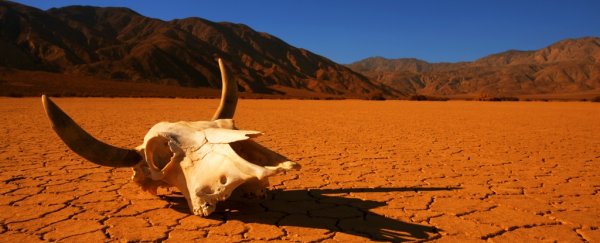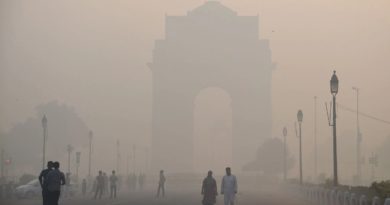We have 10 years to save Earth’s biodiversity as mass extinction caused by humans takes hold, UN warns
Almost a third of the Earth will need to be protected by 2030 and pollution cut by half to save our remaining wildlife, as we enter the planet’s sixth era of mass extinction, according to a United Nations agency.
The UN Convention on Biological Diversity released a draft plan on Monday, which sets global goals to combat the ongoing biodiversity crisis in the coming decades.
The convention had set similar targets in 2010, at a summit in Japan. But the world failed to meet most of those 2020 goals — and is now facing unprecedented extinction rates, threatened ecosystems, and severe consequences for human survival.
“Biodiversity, and the benefits it provides, is fundamental to human well-being and a healthy planet,” the draft plan reads. “Despite ongoing efforts, biodiversity is deteriorating worldwide and this decline is projected to continue or worsen under business-as-usual scenarios.”
Also Read: Warning: a sixth mass species extinction is on the cards
The convention aims to stabilize our fragile biodiversity by 2030 and allow ecosystems to recover by 2050, allowing for a final vision of “living in harmony with nature” — but these goals will require urgent action on both local and global levels.
To achieve this, the draft plans lays out 20 targets for the next decade, ranging from carbon emission reduction to food sustainability.
One target is to give protected status to sites important for biodiversity — covering at least 30% of these land and sea areas by 2030, with at least 10% under “strict protection.” Another target is to cut pollution from biocides, plastic wastes, and excess nutrients by at least 50%.
Other 2030 targets include ensuring that the trade of all wild species is legal and sustainable, bringing greater sustainability to economic sectors and individual consumption, and empowering indigenous communities in the conservation effort.
Some targets focus on the quality of human life, like providing better food security and clean water for the most vulnerable communities — which are then expected to reduce “human-wildlife conflict,” the draft plan said.
The plan will be finalized and adopted in October at a biodiversity summit in Kunming, China.
Also Read: Humans are driving one million species to extinction

Earth has entered its sixth mass extinction
For years, scientists have warned that we are in the midst of a mass extinction — the sixth in the planet’s history, and the first one caused by humans.
Elephants could be gone from the wild within a generation. Amphibian populations are collapsing. And climate change is warming and acidifying the oceans, threatening to annihilate coral reefs.
In total, a million of the world’s 8 million species are currently facing extinction, many within decades, the UN warned in 2019. The global rate of species extinction is at least tens of hundreds of times higher than it has been on average over the past 10 million years.
The main threats are shrinking habitats, the exploitation of natural resources, climate change and pollution, said the 2019 UN report. Humans have altered 75% of Earth’s land and 66% of marine ecosystems since pre-industrial times — changes that come in different forms, from waste dumped into oceans to human-introduced invasive species.
We have wrecked the world’s natural ecosystems — almost 600 plant species have been wiped out in the past 250 years, an extinction rate 500 times faster than it would have been without human intervention. The plants’ mass extinction spell trouble for the millions of species — including humans — that depend upon them.
A huge part of the problem lies in population growth, rising demand, and depleted resources. With a growing population, we have more mouths to feed, but fewer resources than ever. The planet’s declining biodiversity threatens agriculture, placing our livestock breeds and crops at risk.
But the population boom won’t end anytime soon. The draft plan released Monday warned that the current world population of 7.6 billion is expected to reach 8.6 billion by 2030 and 9.8 billion by 2050 — with severe “implications for the demand for resources, including food, infrastructure and land use.”




